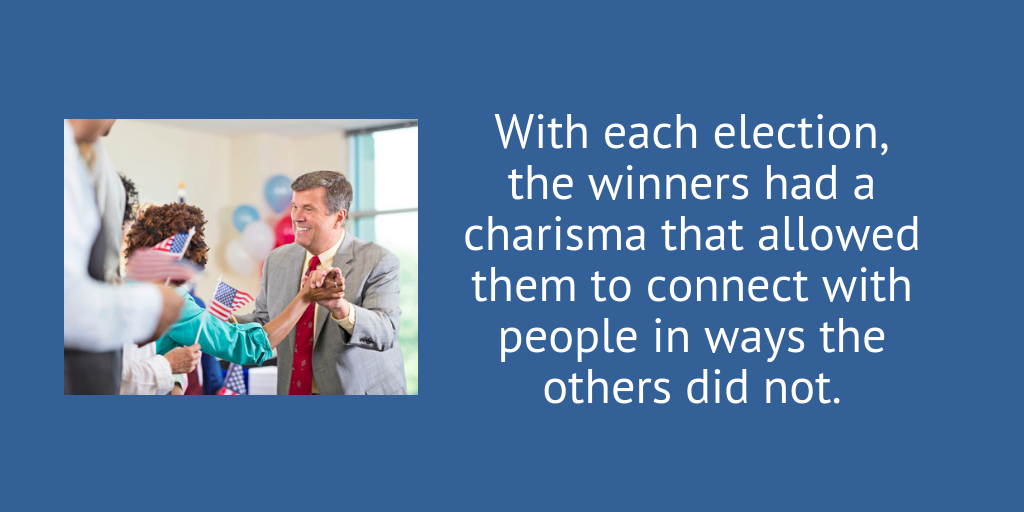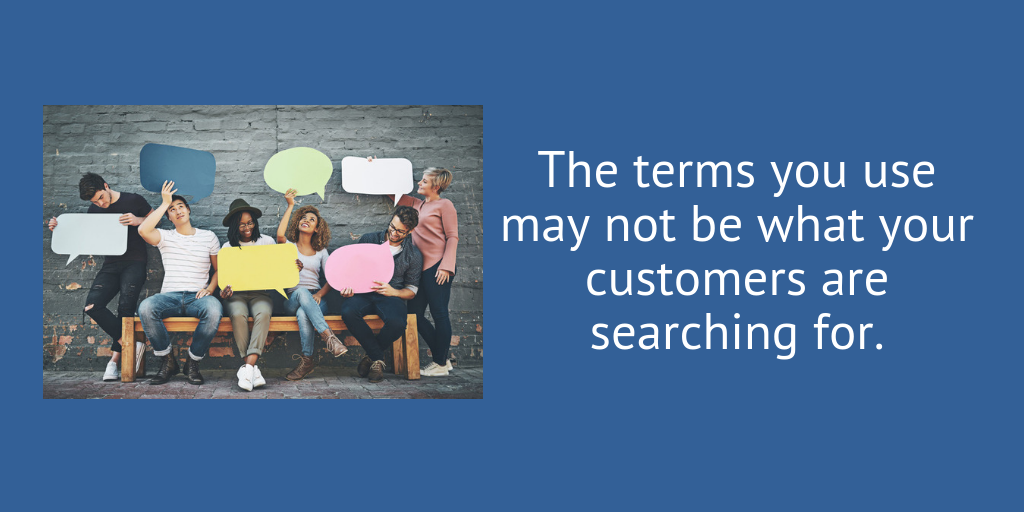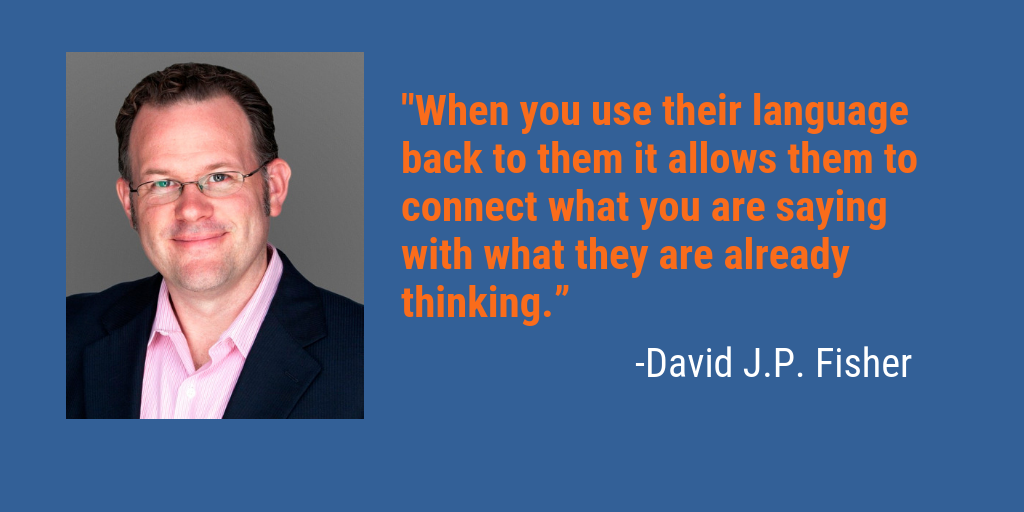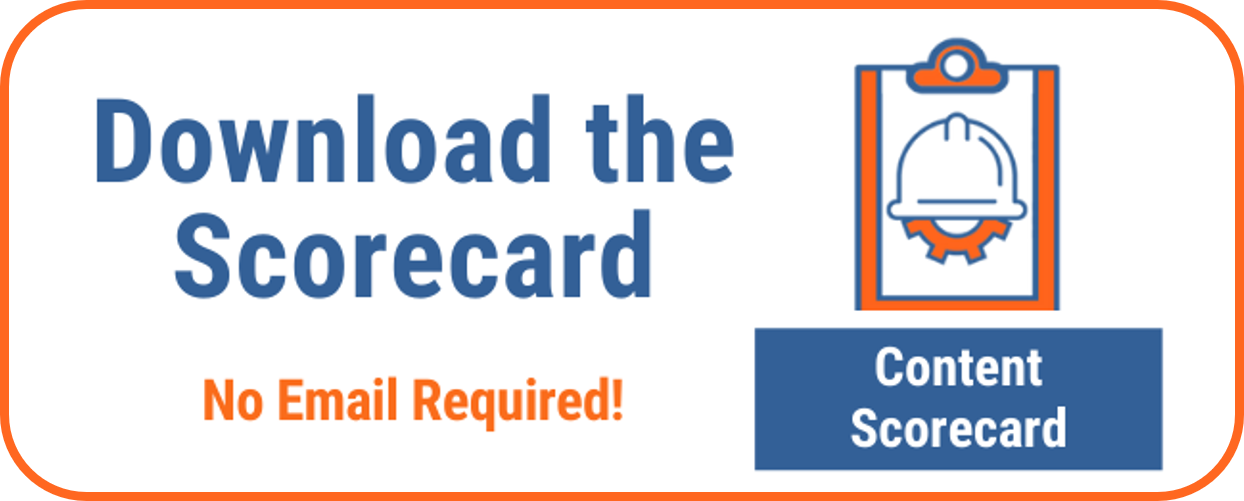To win over your customers, you need to speak their language. With these four strategies, you can learn the language your customers are using, and then integrate it into your own content.
I have no research to back this, but I believe one single characteristic defines who wins a presidential election: charisma.
If I look back at the last few presidential elections, look who wins the charisma contest:
Donald Trump over Hillary Clinton (negative charisma, but nonetheless)
Barack Obama over Mitt Romney
Barack Obama over John McCain
George W. Bush over John Kerry
George W. Bush over Al Gore
Bill Clinton over Bob Dole
Bill Clinton over George H.W. Bush
George H.W. Bush over Michael Dukakis
And the list goes on. With each election, the winners had a charisma that allowed them to connect with people in ways the others did not.

Barack Obama was sooo cool and articulate. George W. was a good ole’ boy with a sense of humor. Bill Clinton could go folksy and loved everyone.
So what constitutes charisma? Is it how a person carries themselves? Their warmth? Their manner?
Well, it’s all of those things, but I believe above all else, it’s the language people use to communicate.
Bill Clinton, for example, invoked Southern phrases like “that dog won’t hunt” when describing strategies that won’t work. This folksy approach endeared him to voters in the South.
And regardless of what you think of our current president, he is the master of speaking the language of his base.

We are not a rational species. We think with our heads, but we tend to act with our hearts. And much of our fight-or-flight decisions are prompted by language.
Speak to your customers in their words
What was so smart about Bill Clinton’s use of an old Southern phrase is that it established a bridge between himself and all the voters. I’m one of your own, he told his voters. I speak your language.
So why shouldn’t the same hold true for your marketing messages? You obviously want to use compelling language, written by an expert communicator. But you have to speak their language to make the same connection.
Here are four tactics to speak the language of your customers:
1. Use keyword research to find their words, not yours
You’re not going to find more conclusive proof of how people refer to your product and the words they use to search for it than keyword research. And the terms a business uses may not always be what their customers are searching for.

For example, one of our clients is a developmental optometrist. They treat “amblyopia,” but the bulk of the searches are for the term “lazy eye.” So we use “lazy eye” in this client’s blog and other content, and then explain the correct technical term.
Sometimes, clients get uneasy when you use colloquial terms instead of (or along with) their professional jargon. But you have to explain that it’s not a matter of right or wrong terminology. It’s what’s relevant to the searcher.
2. Go one-on-one with 3-4 customers
We work extensively with small marketing departments, many of which lack the hefty budgets needed for formal market research.
To help them paint an accurate picture of the types of personas we need to reach, we conduct one-on-one phone interviews with 3-4 customers, a technique called guerrilla research.
Our user experience analysts then pull common themes and phrases from those interviews, and we hone in on the main topics that interest the customers.
When you hear the actual phrases and concerns that the customers use, you immediately start to understand how much (or how little) they understand your product or service. Their language reveals what’s germane to their daily experience, and where they are in their customer journey.
3. Ask your salespeople these three questions
The moment of truth for any content marketer is creating a landing page that sells. Sure, you’ve brought people to the website with your content, but now how do you convert these visitors into leads?
Any good landing page requires compelling language, and no one knows what language closes a deal like a successful salesperson.
To get that language on your landing page, I recommend a tactic employed by David J.P. Fisher. D. Fish, as he’s known, advocates interviewing your salespeople once a week. Ask them three questions:
- What stories are you telling prospects right now?
- What has been your biggest win lately?
- Why have you heard “no” recently?
“Every customer has an internal monologue in their mind. When you use their language back to them it allows them to connect what you are saying with what they are already thinking. Less friction means easier adoption,” said D. Fish.

D. Fish digs deeper into the questions in this post.
Ask the questions and I guarantee you’ll hear the objections the sales team must overcome, and if you listen closely, you’ll also get actual quotes from your customers. Work these into your selling pages.
4. Use thank-you pages to find out why they buy
Joanna Wiebe of Copy Hackers has a killer email strategy that she shared at Content Jam.
Joanna uses the language provided by customers to move people through different stages of the buying process. And she does this with the amazingly under-used resource: the thank-you page.
The thank-you page is what appears after someone fills in a form on your landing page. Most people use this page to thank the customer, and perhaps attempt to get them to sign up for another offer.
Joanna’s team embeds a survey form on their thank-you page that asks a simple question.
For new subscribers, her thank-you page asks: “What was going on in your life that brought you to sign up with Copy Hackers today?”
For new customers, her thank-you page asks: “What was going on in your life that brought you to Copy School today?”
Joanna checks the responses and “boldly swipe their customers’ words,” integrating the language into follow-up emails that are designed to move prospects through the customer journey. It’s a brilliant strategy.
It’s you, not me
You know the old line when a couple breaks up: “It’s not you. It’s me.”
Marketers should be thinking just the opposite when they’re trying to find new customers. They don’t want to “break up.” They want to “break in,” as in break in to your customer’s head and deliver your message.
And to do that, you need to think, “It’s not me. It’s you.”
It’s you who can tell me what you want to buy. It’s you who can tell me what language will connect us. And when I use your language to deliver the sound advice you’re looking for, it’s you who becomes my customer.
Find out how your content and conversion ranks with our interactive version of the Content Scorecard you can fill in yourself – no email required for download.

